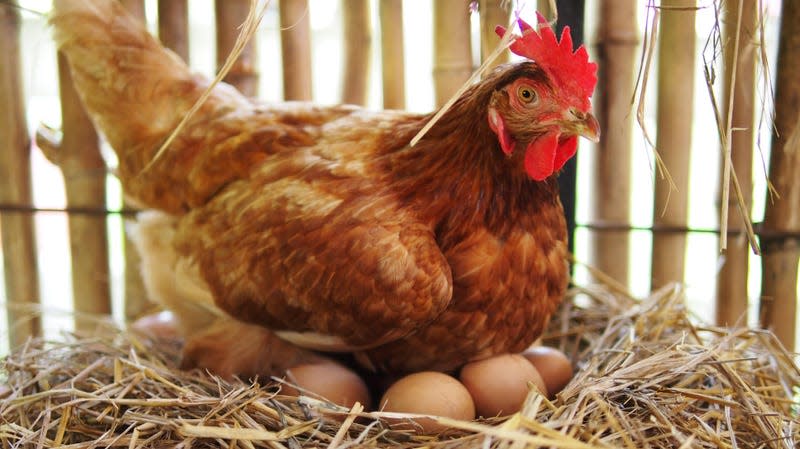Scientists Crack the Mystery of When Eggs First Emerged as a Culinary Craze

New research points to a clear origin for humanity’s love of farm-raised chicken eggs. Archaeologists say they’ve found evidence showing that humans in Central Asia began to raise the forebears of modern chickens for their eggs as early as 400 BCE. The reliable supply of eggs also helped the bird become a widely sought-after animal throughout the ancient world, the study authors say.
It’s well established that today’s chickens are descended from the red junglefowl, a still-living species of wild bird. But there’s long been a fierce academic debate about when and how exactly chicken became domesticated. The brittle hollow bones and fragile eggshells of birds in general are less likely to be preserved compared to other archaeological evidence. And scientists at times have mistakenly identified the ancient remains of other similar-sized wild birds like pheasants or geese as chickens instead.
The authors of this new research, published Tuesday in the journal Nature Communications, say that more recently developed methods of genetic analysis can now finally start to settle some of these longstanding questions about the beginnings of the chicken.
The international team sifted through eggshell fragments collected from 12 archaeological sites dating back 1,500 years ago. These sites were likely scattered along what used to be the Silk Road—the network of trade routes that cut across Asia and Europe. While the Road was obviously most known for its distribution of silk produced in China, the researchers found abundant amounts of eggshells at these sites, suggesting that chicken eggs were a prized commodity there as well. They also found evidence that the eggs were produced more often than would be expected from the typical red junglefowl, perhaps indicating that these ancient chickens had already lost their need to lay eggs during a specific season.
“This is the earliest evidence for the loss of seasonal egg laying yet identified in the archaeological record,” said senior author Robert Spengler, a researcher at the Max Planck Institute of Geoanthropology, in a statement from the institute.
Based on all the evidence collected from these sites, the authors estimate that people in Central Asia started to widely raise chickens for their eggs sometime between 400 BCE to 1000 CE. And they further argue that the abundance of these eggs made the birds all the more popular and set the stage for their widespread domestication.
There are still many unknowns about chicken domestication. Some studies have estimated that the process truly began around 10,000 years ago, for instance, while others have clocked it around 5,400 years ago. More recent research has suggested that there may have been several domestication events across southeast Asia and India during this time, which could have involved other species of related birds besides the red junglefowl. At the very least, the authors say their work does bring us closer to knowing how these birds became such an integral part of human civilization.
“This is an important clue for better understanding the mutualistic relationships between humans and animals that resulted in domestication,” said Spengler.

